Regulation of Osteoclast Differentiation at Multiple Stages by Protein Kinase D Family Kinases
- PMID: 32033440
- PMCID: PMC7036879
- DOI: 10.3390/ijms21031056
Regulation of Osteoclast Differentiation at Multiple Stages by Protein Kinase D Family Kinases
Abstract
Balanced osteoclast and osteoblast activity is necessary for skeletal health, whereas unbalanced osteoclast activity causes bone loss in many skeletal conditions. A better understanding of pathways that regulate osteoclast differentiation and activity is necessary for the development of new therapies to better manage bone resorption. The roles of Protein Kinase D (PKD) family of serine/threonine kinases in osteoclasts have not been well characterized. In this study we use immunofluorescence analysis to reveal that PKD2 and PKD3, the isoforms expressed in osteoclasts, are found in the nucleus and cytoplasm, the mitotic spindle and midbody, and in association with the actin belt. We show that PKD inhibitors CRT0066101 and CID755673 inhibit several distinct aspects of osteoclast formation. Treating bone marrow macrophages with lower doses of the PKD inhibitors had little effect on M-CSF + RANKL-dependent induction into committed osteoclast precursors, but inhibited their motility and subsequent differentiation into multinucleated mature osteoclasts, whereas higher doses of the PKD inhibitors induced apoptosis of the preosteoclasts. Treating post-fusion multinucleated osteoclasts with the inhibitors disrupted the osteoclast actin belts and impaired their resorptive activity. In conclusion, these data implicate PKD kinases as positive regulators of osteoclasts, which are essential for multiple distinct processes throughout their formation and function.
Keywords: actin cytoskeleton; bone resorption; cellular differentiation; osteoclasts; protein kinase D.
Conflict of interest statement
The authors declare no conflict of interest. The funders had no role in the design of the study; in the collection, analyses, or interpretation of data; in the writing of the manuscript, or in the decision to publish the results.
Figures
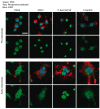
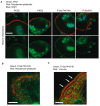

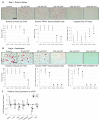

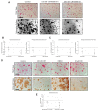
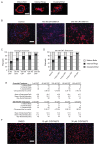
Similar articles
-
Osteoblasts/stromal cells stimulate osteoclast activation through expression of osteoclast differentiation factor/RANKL but not macrophage colony-stimulating factor: receptor activator of NF-kappa B ligand.Bone. 1999 Nov;25(5):517-23. doi: 10.1016/s8756-3282(99)00210-0. Bone. 1999. PMID: 10574571
-
Saurolactam inhibits osteoclast differentiation and stimulates apoptosis of mature osteoclasts.J Cell Physiol. 2009 Dec;221(3):618-28. doi: 10.1002/jcp.21892. J Cell Physiol. 2009. PMID: 19653230
-
Protein kinase D promotes in vitro osteoclast differentiation and fusion.J Biol Chem. 2013 Apr 5;288(14):9826-9834. doi: 10.1074/jbc.M112.444133. Epub 2013 Feb 21. J Biol Chem. 2013. PMID: 23430742 Free PMC article.
-
Mechanism of osteoclast mediated bone resorption--rationale for the design of new therapeutics.Adv Drug Deliv Rev. 2005 May 25;57(7):959-71. doi: 10.1016/j.addr.2004.12.018. Epub 2005 Apr 15. Adv Drug Deliv Rev. 2005. PMID: 15876398 Review.
-
Molecular regulation of osteoclast activity.Rev Endocr Metab Disord. 2006 Jun;7(1-2):123-39. doi: 10.1007/s11154-006-9009-x. Rev Endocr Metab Disord. 2006. PMID: 16951988 Review.
Cited by
-
Effect of protein kinase D inhibitor CRT0066101 on the cell migration of salivary adenoid cystic carcinoma.Hua Xi Kou Qiang Yi Xue Za Zhi. 2022 May 25;40(3):320-327. doi: 10.7518/hxkq.2022.03.012. Hua Xi Kou Qiang Yi Xue Za Zhi. 2022. PMID: 38597014 Free PMC article. Chinese, English.
-
Histone deacetylase 5 is a phosphorylation substrate of protein kinase D in osteoclasts.Bone. 2022 Jun;159:116393. doi: 10.1016/j.bone.2022.116393. Epub 2022 Mar 19. Bone. 2022. PMID: 35318161 Free PMC article.
-
TRAF-STOP alleviates osteoclastogenesis in periodontitis.Front Pharmacol. 2023 May 15;14:1119847. doi: 10.3389/fphar.2023.1119847. eCollection 2023. Front Pharmacol. 2023. PMID: 37261283 Free PMC article.
-
Small-Molecule Inhibitor Targeting Protein Kinase D: A Potential Therapeutic Strategy.Front Oncol. 2021 Jun 24;11:680221. doi: 10.3389/fonc.2021.680221. eCollection 2021. Front Oncol. 2021. PMID: 34249722 Free PMC article. Review.
-
CircPRKD3/miR-6783-3p responds to mechanical force to facilitate the osteogenesis of stretched periodontal ligament stem cells.J Orthop Surg Res. 2024 Apr 22;19(1):257. doi: 10.1186/s13018-024-04727-7. J Orthop Surg Res. 2024. PMID: 38649946 Free PMC article.
References
MeSH terms
Substances
Grants and funding
LinkOut - more resources
Full Text Sources
Molecular Biology Databases
Research Materials
Miscellaneous

